Begonias are known to almost every lover of blooming indoor plants, as it is quite often possible to meet a variety of varieties of this culture in beautiful pots on the windowsill. These flowers always affect the imagination by their appearance, because they can grow in the form of small compact bushes, in the form of high elongated plants, and the color scheme of inflorescence is also very extensive. All this allows you to consider begonias among the most sought-after colors not only in room conditions, but also in landscaping and decorating the site. Begonia is an eternal or unlocking - a bright representative of the big kind of begonia, which is famous for its continuous bright flowering. This flower can be placed without any problems in the bedrooms and pots, as well as decorate with a flowerbed or flower garden on the household site.
Proper landing and care for unconishing begonia is the key to getting a beautiful plant. That is why in this article we will consider the description and features of this culture, as well as we note the characteristics of popular begonia varieties of all-drying and important moments of growing agrotechnics in open ground and home conditions.
Features and morphological description of Begonias always
Begonia Unlocking is a long-term semi-staple, which belongs to the genus Begonia and the Begonia family of the same name. Today you can note just a huge number of different varieties and begonia varieties, which are distinguished by their appearance, size, colors and cultivation features. Previously, this flower could be grown only at home due to southern origin, but thanks to the fruitful work of breeding scientists from around the world, a large number of hybrid begonia varieties appeared, which can be grown in open ground and enjoy elegant colors to the most frosts.
Begonia Unlocking is a complex hybrid of several types of begonias. To obtain this bright and unusual flower, scientists used begonia elegant, Begonia Schmidt, Begonia Lanchiana. All these varieties in nature are presented in the southern territories of America, Asia and Africa, where they prefer to grow in the shade of trees and mountain clefts. However, the resulting type of begonia can feel great in the measured zone in the open soil.
His name "Begonia" received in honor of the Governor of Haiti Michel Begon in the 17-18 century, which was known for his love for various exotic plants. It was he who became a sponsor of the expedition of his friend a scientist in West India to study new plants. There were the first 6 varieties of Begonias, named in honor of the patron. Begonia Emptying on the territory of Europe fell about 300 years ago, where it was first raised in the Botanical Garden of Germany. From there, it began its distribution throughout the continent. To date, Begonia has always been one of the most beloved plants of the city investors of the flower, which often use these species due to unpretentiousness and long blossom.
Description of Begonias Altreating:
- Begonia Unlocking is a herbian perennial plant, which is most often growing in the form of a busta of different magnitudes, it all depends on a particular flower variety.
- However, despite the fact that this plant is a perennial, in conditions of moderate climate, the begonia always can only be grown as an annual flower, which will delight you with bright inflorescences until the first frost.
- The flower is a pretty compact and small plant, which can be perfectly placed on any flowerbed and in vases. In the height of Begonia, the everwelling can reach about 15-40 cm, there are more tall grades growing up to 50 cm. Depending on the height of plants of this kind of begonia, scientists have drawn up a classification in which low-spirited varieties have been isolated, average varieties and tall begonia varieties unlawful.
- These plants are usually growing in the form of half-workers.
- Begonia stem smooth and naked, powerful enough and meaty. Each begonia stem has a peculiar structure. It seems to see him that it consists of a knee, each of which ends with leaves.
- The leaves of this plant are exactly the same as other types of begonias. They are completely devoid of symmetry. They are slightly elongated rounded shape. Their size varies depending on the concrete boning variety with continuous flowering.
- The begonia always is often referred to as a decorative plant, since its foliage is of a wide variety. Eliminate varieties with green foliage, reddish, bronze, brown-red or motley foliage.
- Sheet plate is quite fleshy, glossy and well-distinguished by residence.
- From the leafy sinuses that each knee ends on the stem, long blooms appear, the tops of which walked begonia flowers always.
- Flowers in this variety of begonias are small, can be simple and terry, although in the conditions of open soil, it is most often grown by grades with simple inflorescences. Such plants are easy to distinguish between male and female flowers. In the first, it consists of four petals, and the second of 5.
- There is in a large line of hybrid begonia varieties of unwell and specimens with beautiful terry flowers.
- Flowers on the tip of the flowers are collected in a few, loose inflorescences in the shape of a small brush that are beautifully lifted over the foliage and form a peculiar bright, colorful hat.
- Color coloring of the begonias of this species pleases the eye with its manifold: you can find varieties with white flowers, orange and red, pink and purple, crimson and even two-color.
- Seeds of this plant are very small and ripen in large dark brown boxes.
- Begonia Unlocking is used to decorate flower beds and flower beds on the plot, gardeners plant it along burgures and garden tracks, on the Alpine slides, as well as in vases and pots. They grow these beautiful flowers and at home.
- If you grow these flowers in the southern regions, you can observe almost year-round flowering. However, in any case, the peak of blooming begonias always falls on June-November, when both new and new bright inflorescences are blooming at the same time and continuously on bush.
A variety of begonia varieties always
Begonia Unlocking for more than 300 years known to gardeners and simply lovers of beautiful colors. During this time, the breeders were carried out a lot of work on the removal of various varieties of this species, which are classified into various groups in the height of the stems, in color color and on the color of foliage.
At the height of plants, the following groups of Begonias have always been distinguished:
- The lowered begonias, which are in height can reach 15-20 cm. They constitute the first group of hybrid little begones.
- Mature begonias or second group. These hybrid flowers in height reach approximately 20-30 cm.
- Tall begonias or a third group to which flowers grow, growing in a height of more than 30 cm.
Consider the characteristics of the most popular begonia varieties of which of different groups.
- Cocktail F1 Series Begonia Sort Begones. It is a small compact plant, which is distinguished by dark reddish brown or bronze leaves and flowers of four colors: light pink, dark pink, white and dark red.
- Begonia variety of the first group "EUREKA F1 SERIES". This series includes begonia with 11 different colors of inflorescences. Leaves are quite large, green or bronze shade. The variety has good resistance to heavy rains and drought. Flowers are large, in diameter can reach about 3.5 cm.
- Surge Bogony "Super Olimpia F1 Series". Plants of this series of low-spirited begonias of which will delight early and abundant blossoms. Includes 6 different colors of inflorescences: coral and red, pink, dark pink, light pink, white and two-color.
- Series series "Queen F1 Series". A very compact variety, which in height can reach about 15-18 cm. It is represented by three colors of inflorescences: red, white and pink. Flowers are small, dense. Green leaves.
- Begonia variety of the first group "Albert Martin". A small bush that grows as much as possible to 15 cm. Leaves glossy, green shade with red border along the edge of a sheet plate. Flowers form loose inflorescence consisting of 9 flowers. Pleases the bright coloring of petals - carminno-purple. Early and abundantly blooms, at the same time can bloom up to 55 colors.
- Grade "Bella". In height, the plant reaches 18-19 cm. Middle size leaves, green with red border. The inflorescence consists of 7 colors of a saturated pink shade. Blossom abundant.
- Grade Begonias of the first group "Bicola". One of the miniature plants of this group, height can grow only 13 cm. The leaves of green color, the inflorescence consists of 4 small snow-white colors.
- Begonia variety of the second group "Karmen". Differs in beautiful brown foliage. Inflorescences consist of 6 colors of pink shade, which in diameter can reach 3 cm.
- Grade of the second group "Othello". It is a small compact bush 20-22 cm in height. Flowers have a very bright scarlet shade. Different with abundant bloom.
- AMBASSADOR F1 series. These are fast-growing compact plants, in height reach 20-25 cm. Leaves are quite large size and green shade. The series includes plants with 7 color paintings: white with pink border, bright pink, pink salmon, bright red, gentle pink, purely pink and white.
- Party F1 Series series. Plants in height reach 30 cm. Possess large green or brownish red leaves. Pleases with abundant flowering and large colors up to 4 cm in diameter. Flowers of three shades: red, pink, white.
- Series of Begonias of the second group "Vision F1 Series". This is a strong branching bustard, completely covered with enough dark leaves and large colors of several shades options: red, pink, dark pink, pink-salmon, white.
- Grade of the third group of the "Alba" begonia. Growing in the form of a large spreader coastal with large leaves of green shade. White flowers, large, collected in inflorescences.
- Grade "Kathe Teisher". High and very spectacular plant with large greine leaves with red border. Inflorescences are lush, consist of 13 large colors, which in diameter can reach 5 cm.
- Baby Wing Pink F1 Boggonia Series. Plants in height grow at 40-45 cm. Dark green leaves, slightly corrugated. Flowers of pink shade, drooping.
- Series "Inferno F1 Mixed". Tall bushes up to 45-50 cm in height with large leaves of green and bronze shade. Flowers are large enough, can be white or pink.
- A series of begon's tall "Lotto F1 Series". It is a faction of a plant with a height of 30-40 cm with green leaves of medium sizes. This variety has the largest colors in diameter reaching 5-6 cm. Flowers can be pink, dark red, bright red and white.
Goggonal reproduction of excellence: the most common ways
Begonias unconceived without problems can be raised on their plot or at home on the windowsill. For this, it is important to know the appropriate methods of breeding. These bright and gentle flowers can be diluted on their own with the help of seeds and cuttings. Consider the features and rules for using each breeding option.
Seed reproduction of Begonias always
- This method of reproduction is used by gardeners, but not as often as vegetative. This is due to the fact that the begonia seeds are very small and difficult to sow them into the ground.
- Seed seeds from January to March.
- Seeds can be collected independently after complete flow of inflorescences, but more often gardeners acquire seeds in garden stores. Especially since the seeds began to cover with a special shell consisting of nutrients. It helps speedy germination.
- For seeding, it is necessary to take a suitable container. If you grow begonia seedlings for the windowsill, you can restrict ourselves to a small pot. When sowing seeds for planting in open ground, give preference to large containers.
- It is important to prepare the soil mixture, which should consist of humus, leaf land and sand. Before falling asleep in containers, it needs to be carefully sifted.
- Before sowing, the surface of the soil is abundantly moisturized. Next, the complexity lies in the distribution of seeds on the surface. Make it difficult. Many gardeners lay on the surface of the snow so that the seeds can be seen.
- Then the seeds are covered with glass.
- It is important to carefully care, place the boxes into the room with a temperature of 20-22 degrees, water through the sprayer, ventilated. Seedlings should appear in 2 weeks.
- After about 1.5-2 months, seedlings dive into large pots. In the open soil, seedlings can be planted at the end of May or in early June.
Bengon's reproduction of excellent cuttings
- This method is considered the most popular, moreover, terry varieties can only be breeding with it.
- It is possible to multiply the begonia in February that is possible in February.
- If the uterine plant was in the open soil, in the fall before the onset of frosts it must be transplanted into the pot and put it into the premises. It can immediately throw off all the leaves, but will grow further and increase further. It is from him that in the future you need to cut the cuttings for breeding.
- Cuttings are recommended not to take from the top, but at the base of the stem. It is important to ensure that each cutlets consist of 3 intercosals.
- Landing material must be prepared for rooting. For this, the bottom leaves are broken completely, and the upper only partially.
- Next prepare the container with the soil mixture consisting of humus, leafy land and sand.
- The cuttings are rooted at a low angle, after which the soil is abundant, and the planting material is covered with a film.
- The film is removed only after the cuttings went into growth.
- After complete rooting, the cuttings can be transplanted into the room pots for growing on the windowsill or in May to plant them in a flower garden.
Bounding Begonias Altheless
In landing Begonias, there is nothing complicated in landing, especially in the absence of desire and opportunity to mess with seeds, you can buy ready-made planting material and plant your favorite flower at home or on the plot. All that will be required of you is a clear observance of all the rules for the preparation and planting of this plant.
The choice and acquisition of the bonding material of the begonia always
- As noted above, the planting material today can be easily purchased in specialized garden centers and nurseries, which are professionally engaged in breeding plants.
- In stores you can buy seeds or ready-made seedlings. Usually they are sold in small peat pots, which make it easier to transplant into open ground or in another pot.
- Before buying, carefully think about which begonia varieties always wanting you want to see on your site or on the windowsill. Here it is necessary to repel from the height of the plant. For landing along the garden track, dwarf varieties are suitable, and more tallest varieties of different colors can be purchased for planting on flower beds.
- If you are going to grow a begonia of this kind of home, you can purchase more thermal-loving varieties, for example, with terry flowers.
- Before buying, carefully inspect the seedlings, usually they are already blooming, so you do not lose with the choice of color. They should not be damaged or yellowed areas.
Choosing a place for landing and soil begonias always
- This is further important to choose the appropriate place to plant begonias always.
- On the flower bed and in a flower bed for this flower, it is important to choose an open solar place with a mandatory shading at a meal heat, as the plant under the scorch rays of the sun can perish.
- It feels perfectly in a small one with a damp soil, but it is not recommended to plant in the shade, since the stems will be very pulled out.
- If you plan the sapling of Begonias at home, then you will definitely choose a good pot. It must be drainage holes. Do not put a pot on the sunny window sill. Great place with Western or East.
- These plants prefer loose, breathable soil of the weakness reaction.
Technology Planting Begonias Unlocking - Instructions
- The begonia of this variety into the open soil is planted at around the end of May, when the threat of return freezers. If the landing is planned in the room, it can be carried out at any time.
- First of all, it is necessary to prepare landing wells. To do this, the selected place is thoroughly screwed up with the help of shovels and loosen, after which all weeds are removed.
- Further, the hands at a distance of about 15-25 cm make small wells from each other, since the root system of the begonias of the alternating surface surface and it is not necessary to blow greatly.
- After that, the wells must be abundantly shedding with water and give her a little to absorb.
- Only at the end of all these actions can be proceeding directly to planting plants.
- Saplings of continuous flowering begonias are carefully removed from the pots, which are also pre-shed water, and then placed in the wells.
- It is not necessary to plunge the seedlings, it is enough to freely place the roots in the pit and sprinkle the soil.
- If the landing passes in room conditions, then it is necessary to take a spacious, but not a deep box and fill it with soil mixture of humus, leaf land and sand. Do not add perlite or vermiculite.
- Next, make a slight deepening and put the seedlings of Begonias.
- After landing, the flowers need to pour.
Agrotechnical cultivation of begonias of all-flowing: secrets and nuances of care
The care of the begonia always does not make much difficulty, since this plant is unpretentious and not capricious.
- Watering. Begonia of this species is considered a moisture-loving plant, but does not endure an excessively moistened soil and arid. Therefore, it is important to observe the measure. Watering needed regularly, waiting for the drying of the upper layer of the soil. In room conditions, flowers are watered with water.
- Swimming. Begonia is a fairly small plant, so weeds in opened ground conditions can slow down their growth and flowering. Regularly recommended a little loose soil and remove weary grass. In flower pots, it is also necessary to loose periodically soil, since it becomes dense over time.
- Feeding. If you want to get the year-round blooming of the begonia always, then the application of fertilizers should be regular. Twice a month is allowed to feed flowers with complex mineral fertilizer or special fertilizer for begonias.
- Transfer. Some gardeners transplant the begonia for this kind to rejuvenate the coastal. You can also transplancing the bushes of the begonias of the unconceived from the open soil into the pots for wintering.
- Lighting and humidity. When growing begonias, it is important to observe both the humidity from which flowering will depend on. This plant loves high humidity, but it reacts badly on spraying. It is recommended to spray the air around it or put a tank with water. This flower requires a lot of light, so in winter it needs to provide additional lighting with the help of lamps.
- Wintering. If you grow a begonia that always in the open soil, then for the winter it can be transplanted into a pot and put a warm room where after a while it will bloom again. If you don't have the opportunity to pick up a flower home, you should not be upset. It is enough to pick one plant and get planting material from it for the next year.
Begonia Unplaying - Photo
Begonia Unplaying - a bright and very beautiful flower, which feels great on both sunny windowsill and flowerbed among other plants. The cultivation of this culture will not deliver large hassle, but only a mass of delight and joy from contemplating gentle and elegant inflorescences from the beginning of the summer to the end of autumn.

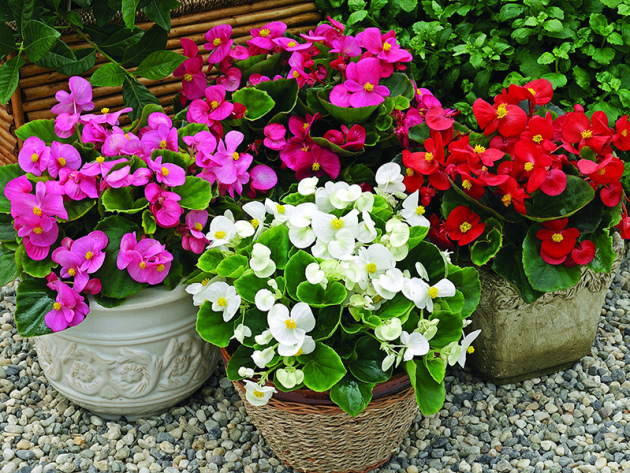
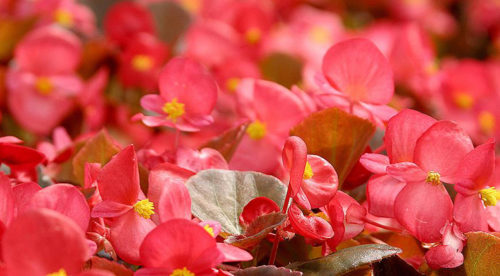
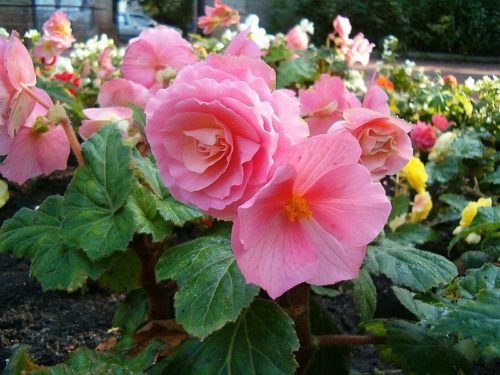

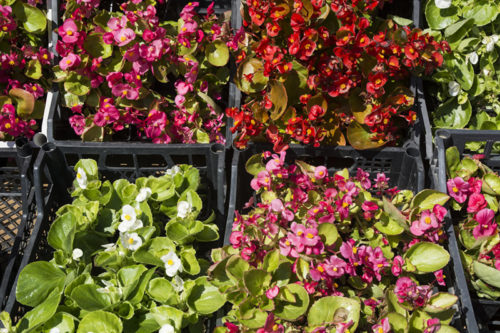
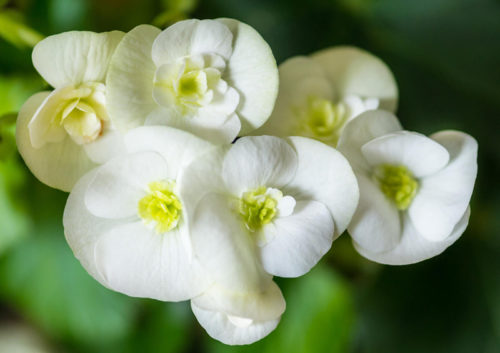
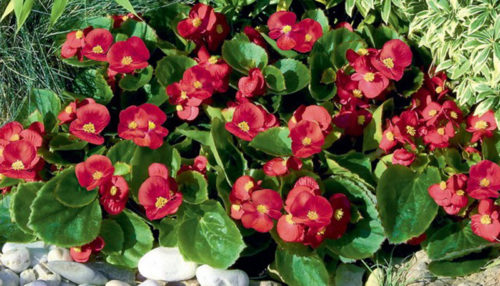
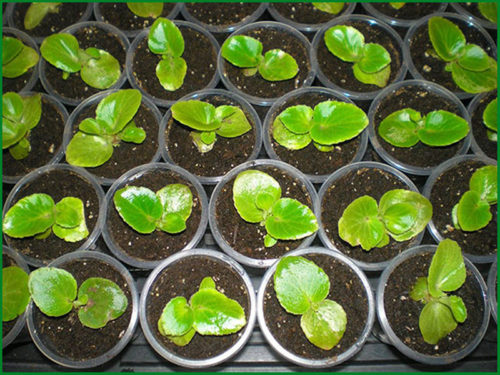
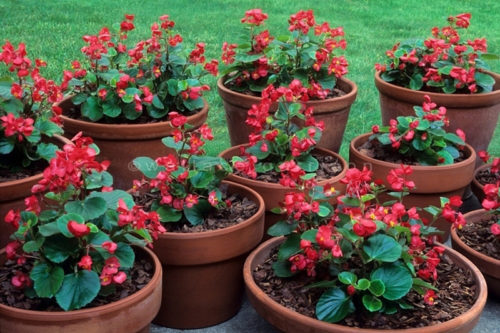
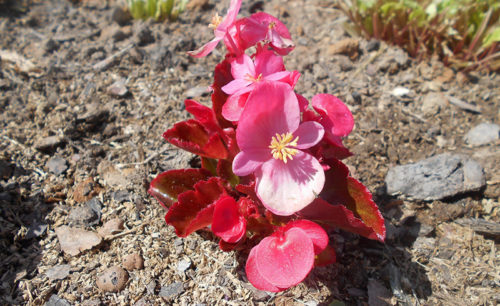
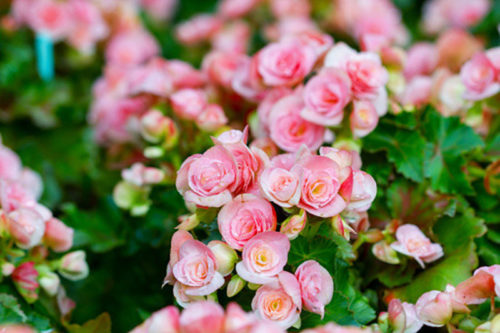
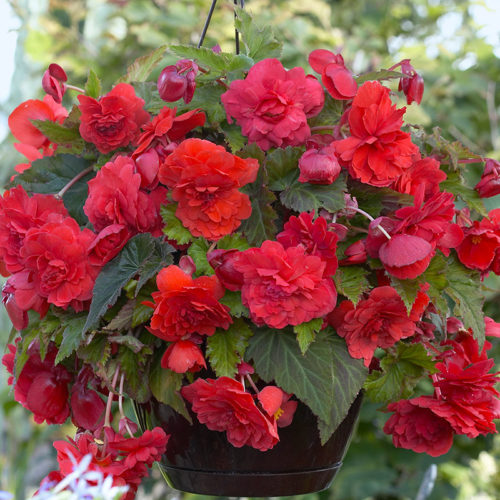
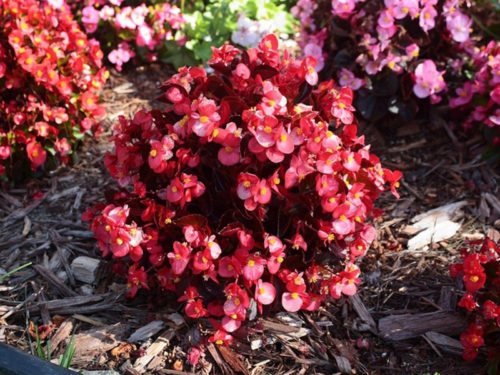
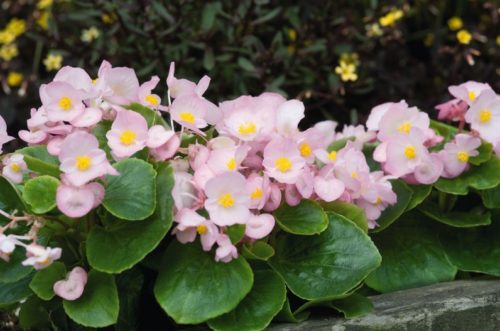














 Start a discussion ...
Start a discussion ...